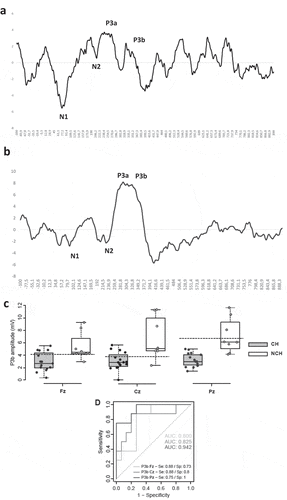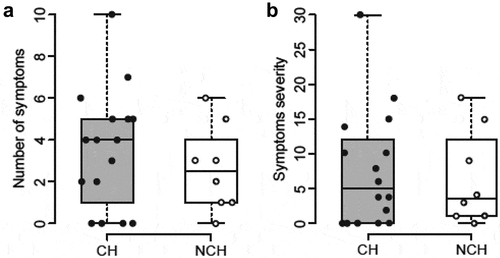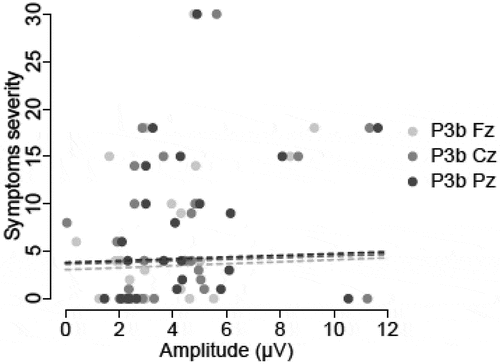Figures & data
Table 1. Age, SCAT2 results and ERP (P3b) parameters according to the concussion history of the athletes.
Figure 2. Grand average ERPs to target stimuli recorded in concussion history group (a) and in group without history of concussion (b). Amplitude, in µv, is represented along Y-axis while latency is along the X-axis and in ms. ERPS are represented with the N1 exogenous followed by endogenous responses: N2, P3a and P3b. (c) P3b amplitude according to recording site and concussion history. (d) ROC/AUC analysis of the ability of P3b amplitudes to discriminate athletes with a history of concussion from without.

Table 2. Correlation between endorsed symptoms and ERP parameters.


